Grand Cherokee takes giant step for 2011
By John Gilbert
The Wrangler may always be the Jeep company icon, because it has never changed from the basic and rugged all-terrain bulldog it was when supporting troops in World War II. But it will have to at least share the podium with the 2011 Grand Cherokee, which has become something of an icon on its own after serving for 20 years as a durable and tough family hauler, to say nothing of being primarily responsible for starting the whole SUV trend.
For 2011, the Grand Cherokee takes its historic capability to an unprecedented level of class and sophistication. It isn’t just an upgrade; the 2011 Grand Cherokee is a completely new vehicle that crosses “t’s” and dots “i’s” on words that were never before in the vehicle’s vocabulary.
As a reward for its surprising scale of its improvement, the Grand Cherokee was voted along with the Ford Explorer and the Dodge Durango as the three finalists for 2011 North American Truck of the Year. It’s an award that is greatly coveted, and the Grand Cherokee finished second to the Explorer this year, but just reaching the final three is a tremendous compliment to its improvement.
My biggest curiosity at the Grand Cherokee’s introduction was how much influence on its revision came from Fiat, the new corporate owner of Chrysler, Dodge and Jeep. Turns out, the vehicle was completed by the time of the takeover, and credit instead should go to Mercedes, the previous owner, which left behind some of the more sophisticated elements of its superb off-road vehicles to underpin the Grand Cherokee.
It looks better on the outside and interior, boasts 146 percent improvement in torsional stiffness, bristles with high-tech refinements, and adds a new and impressive 3.6-liter V6 to the existing Hemi V8 for power. Inside, the Grand Cherokee has controls at your fingertips that might not be familiar to anyone who hasn’t driven a Range Rover — the high-ticket master of the luxury off-road segment. Read more
Sonata challenges electric duo for Car of the Year
By John Gilbert
The Hyundai Sonata has taken on the automotive world this year, and by some measurements, it has won. Now, however, it is a decisive underdog as one of the three finalists for North American International Car of the Year. The other two finalists are the super-hyped, plug-in electric media darlings — the Chevrolet Volt, and the Nissan Leaf .
Our Car of the Year jury has 49 members, and I am proud to be among them. We are independent, and hopefully independent thinkers, and we are not beholden to any advertisers. In fact, we pay exorbitant dues to cover our very nice trophies and own expenses — unheard of among automotive journalists, who are used to being flown and fed in exotic places while sampling the newest vehicles. A disproportionate number of our jurors come from the Detroit area, where there is vehement support for the struggling domestic nameplates, regardless of where they might make their new cars. We’re all pulling for General Motors to get back to its formal power, and Chrysler too, and we’re impressed at Ford’s advancements without government loans, bailouts, or bankruptcy.
It will be interesting to see if our jury falls into line with assorted magazines in picking the Chevrolet Volt, and we won’t know until after our final revote of the three finalists. The winner will be announced January 10 to kick off the Detroit International Auto Show. Read more
Car of the Year finalists got 2010 winter test
The Christmastime blizzard of 2009 couldn’t have come at a better time, as far as car-testing is concerned. We had undergone some cold weather and a small storm during the week when I was test-driving a 2010 Ford Fusion Hybrid, and on Christmas week the enormo storm hit the Twin Cities and Duluth, while I jumped back and forth road-testing a Volkswagen Golf TDI and a Buick Lacrosse.
The significance is that while auto writers from all over the country drive the same new vehicles, none of them get to experience how the cars work — or if they work — in the severity of Northern Minnesota’s harshest wintertime. And the specific benefit of driving those three particular cars as 2009 spent its final week is that those are the three cars that are finalists for the 2010 North American Car of the Year.
In the 15 years I’ve voted on the jury, this is the toughest, most wide-open competition I’ve seen. The three finalists for the North American Car of the Year are the Buick Lacrosse, the Ford Fusion Hybrid, and the Volkswagen Golf, which includes the GTI and the TDI (turbo-diesel) models as well as the basic compact.
Chief designer of new Camaro brings one back home
Tom Peters came home last week, and he brought a couple of his latest works of art with him. He also brought his son, so he could show him the places he used to live in the Minneapolis suburb of Deephaven, with the family moving to nearby Chaska when he was 13.
“We used to play hockey on Lake Minnetonka, and I’ve been telling my son about it,” said Peters. “He’s playing now in the Detroit area, but he’s never played outdoors.”
When Peters was in school, and maybe his mind would wander into daydreams, he would draw things. He saved one of them and reproduced it, and I was flattered that he gave me a print. It is a drawing of a hot-rod, one of those high-up vehicles that used to be the favorite style of hot-rod magazine cartoonists, and it was of a modified 1969 Chevrolet Camaro.
The significance of that is that the pieces of art Peters brought home to put on display in Minneapolis were a pair of 2010 Camaros, one dark red and the other dark blue — vehicles whose design was the responsibility of Peters. There is no doubt about the connection Peters enforced with the concept car, and, more important, to the classic vintage 1996 model.
Both of the new cars had 3.6-liter V6 engines and were RS models that drove smoothly in a brief whirl up the freeway and back to the Guthrie Theater. The big Corvette 6-liter V8 has been popular with first buyers, but after the muscle-car surge, Chevrolet anticipates the potent and high-tech V6 will become the dominant choice in the car. Read more
Hyundai bolsters size, performance of 2010 Sonata
Pretty sly, those folks at Hyundai. When they entered the automotive scene, they were cautious and conservative, and they stamped out copies of proven cars from other manufacturers. A lot of serious car-fans paid little attention, and maybe a lot of us were looking the other way when the midsize Sonata came out and developed into a competent car, and therefore we can use that for an alibi for not noticing that the Sonata has become an outstanding car.
Saying that a car is “competent” sounds like a rip, because it implies it’s not noteworthy enough to describe beyond just meeting established criteria for various assigned tasks. Toyota has led the way in the automotive world by making cars that are infinitely competent. For people who have bought flashy cars, or gimmick-filled cars, or cars that wind up with countless quality or maintenance issues, getting a car that is competent is a big deal.
The Sonata, however, sneaks up on us by being competent even while finding its way to the upper echelon of other important factors, including style, size, convenience, roominess, comfort, and even sportiness.
OK, so sportiness is a bit of a stretch. But after driving various models of the Sonata, including the luxury leading Limited, and the sportiest SE, it occurs to me that with just a few tweaks to the suspension, and maybe a slight alteration in aspect ratio to bigger wheels with more performance-oriented tires, and toss in steering wheel paddle shifters, and the Sonata could indeed match up well with the sportier midsize sedans. Read more


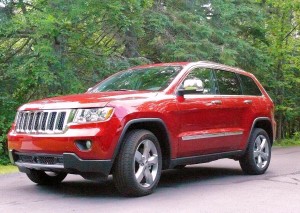
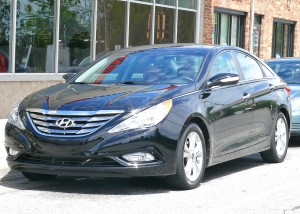
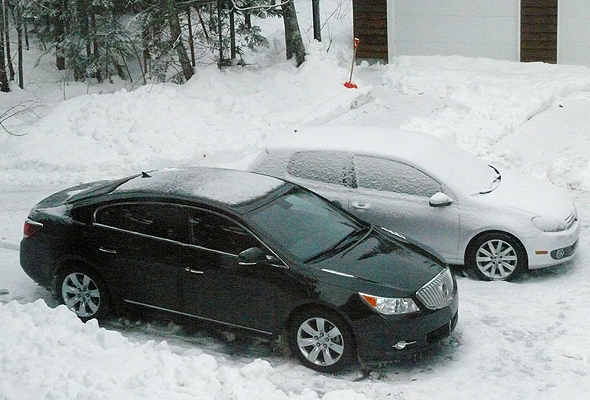
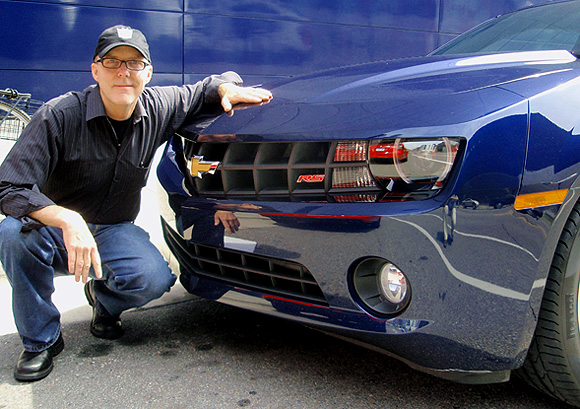
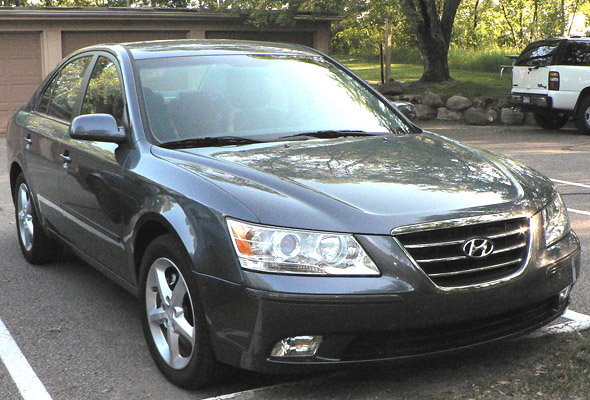
 John Gilbert is a lifetime Minnesotan and career journalist, specializing in cars and sports during and since spending 30 years at the Minneapolis Tribune, now the Star Tribune. More recently, he has continued translating the high-tech world of autos and sharing his passionate insights as a freelance writer/photographer/broadcaster. A member of the prestigious North American Car and Truck of the Year jury since 1993. John can be heard Monday-Friday from 9-11am on 610 KDAL(www.kdal610.com) on the "John Gilbert Show," and writes a column in the Duluth Reader.
John Gilbert is a lifetime Minnesotan and career journalist, specializing in cars and sports during and since spending 30 years at the Minneapolis Tribune, now the Star Tribune. More recently, he has continued translating the high-tech world of autos and sharing his passionate insights as a freelance writer/photographer/broadcaster. A member of the prestigious North American Car and Truck of the Year jury since 1993. John can be heard Monday-Friday from 9-11am on 610 KDAL(www.kdal610.com) on the "John Gilbert Show," and writes a column in the Duluth Reader.